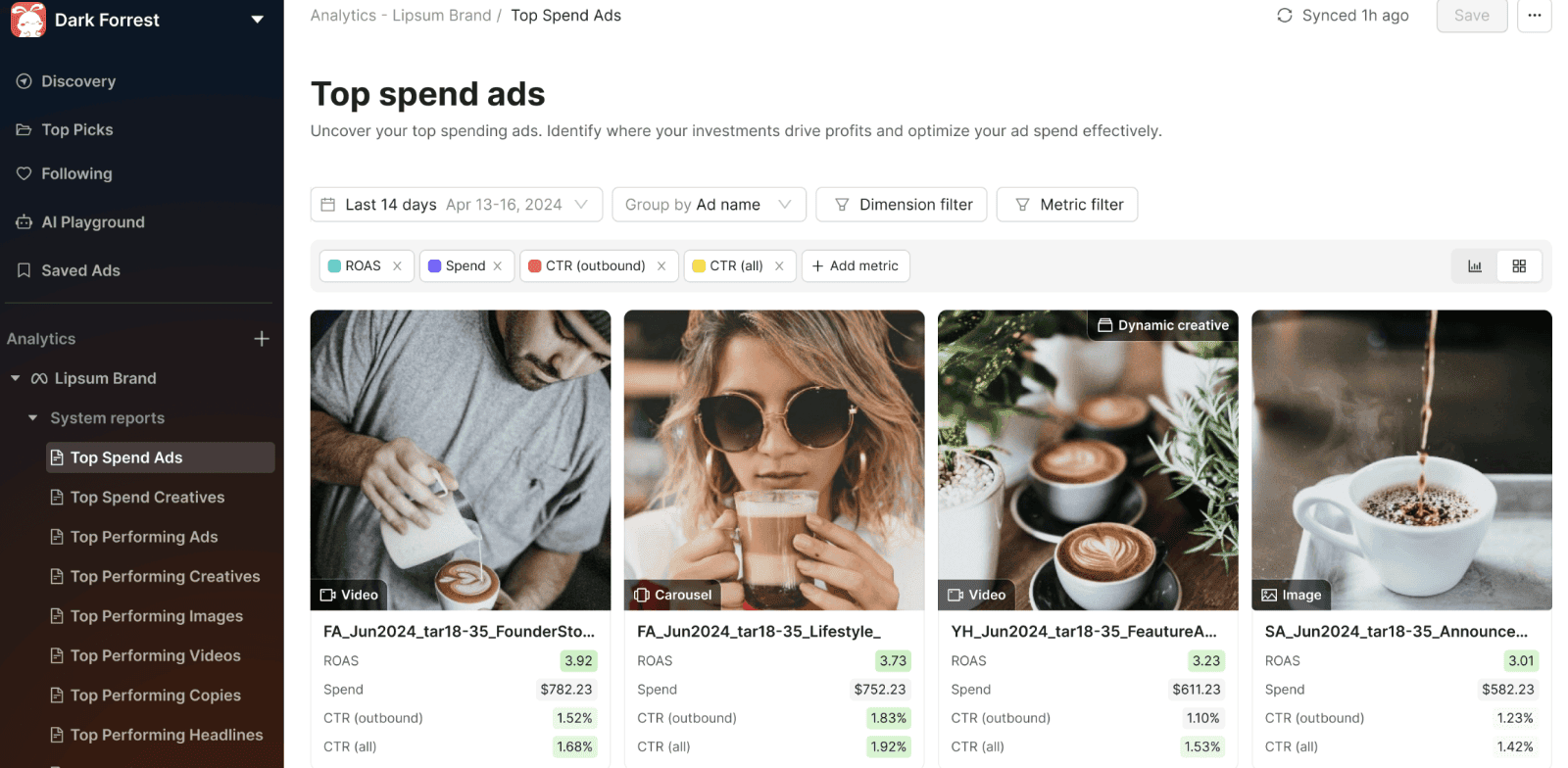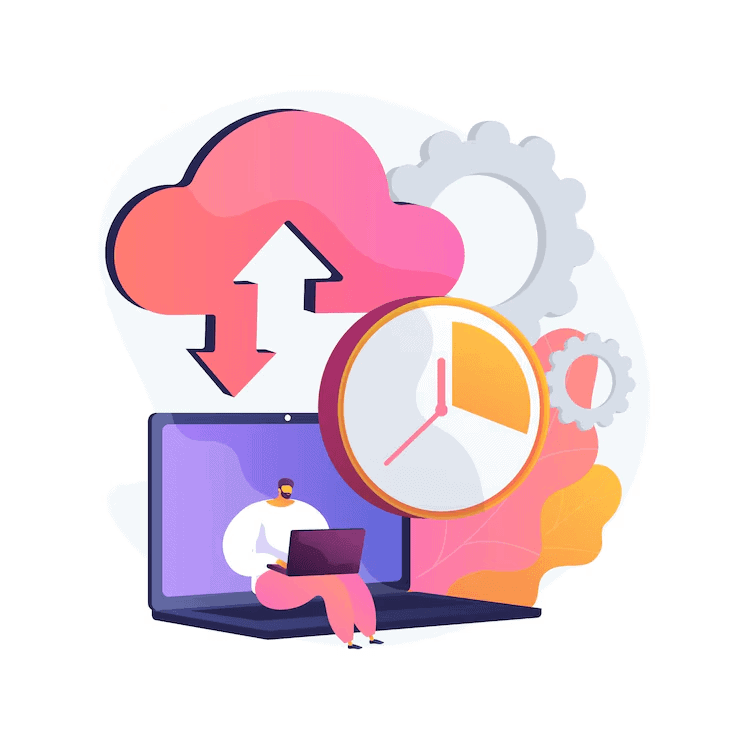An effective social media strategy isn’t just about the number of followers; it’s about aligning your marketing campaigns with real business objectives.
This guide will show you how to align your social media strategy with your most critical business goals, whether they’re driving sales, increasing brand awareness, or improving customer engagement.

Image by vectorjuice from freepik
Step 1: Define Your Target Audience

Image by vectorjuice from freepik
Your first step to building a successful social media strategy is to identify your core audience. The better you define your audience, the more effective your social media marketing will be.
This will help you create customer personas—a representation of your ideal customer.
Start by understanding who your current paying customers are. Use key demographics, such as age, gender, profession, and net worth.
You can enrich your sales data with details about your followers on different platforms. Social media analytics tools provide a tremendous amount of follower information that will help you understand who’s interacting with your brand’s content.
Understand Audience Motivations and Preferences
Once you have identified your main target audience, you need to work on understanding their motivations. The key to good marketing is to figure out why your audience will engage with your content. There can be many reasons, and these vary depending on your brand.
For instance, if your business operates in the education sector, your audience will likely engage with your content to gain knowledge or insights. Or, if you’re in the fashion industry, your audience probably wants to stay updated on the latest trends or get style inspiration.
Collaborate with your sales and support teams to tap into their direct knowledge of customer pain points, buying habits, and motivations. These teams are often at the forefront of customer interactions and can offer valuable insights into your audience’s behaviors and preferences.
Interviewing existing or potential customers is crucial for better understanding your target audience.
“During interviews, you’ll want to learn more about customers’ needs, preferences, the types of content they consume, and the way they purchase products or services.” says content marketing consultant Boris Mustapic.
Step 2: Conduct Competitor Research

Image by vectorjuice from freepik
Competitor research and analysis is a vital step in a social media strategy.
2.1. Analyze Competitor Strengths
By analyzing competitors’ strengths, you can gain insights into the type of content that resonates with their customer base. Understanding what works for them allows you to refine your content, focusing on proven strategies that drive audience engagement.
Look for factors such as engagement metrics, popular content formats, and the effectiveness of influencer partnerships.
For instance, a competitor might see success with video content or social stories that generate high engagement. That’s a good indication that videos might work well for you too. But dig deeper—analyze videos’ topics, aesthetics, editing. See if your competitors are actively repurposing content (say recording long-form videos for YouTube and then making a series of short-form videos for YouTube Shorts, Instagram Reels, or TikTok).
For inspiration, explore these examples of creative influencer marketing campaigns that effectively showcase how brands engage their audiences through innovative strategies.
2.2. Identify Competitor Weaknesses
Evaluating competitors’ weaknesses helps to identify gaps and missed opportunities. You can position your content strategy to stand out and address these overlooked elements by pinpointing areas where they fall short.
Look for low-performing content types, inconsistent posting schedules, or engagement issues, such as posts with limited comments or shares. If a competitor struggles with maintaining a steady brand voice or lacks responsiveness in community interactions, you have an opening to build a more reliable and personable brand presence.
Take note if they avoid certain content formats or platforms; this may signal a lack of resources or expertise in those areas. Experiment with these approaches, especially if your audience shows interest.
Analyzing competitor weaknesses is not just about avoiding their pitfalls—it’s about recognizing and exploiting opportunities that they have yet to explore.
Step 3: Optimize Your Social Media Profiles
 Image by vectorjuice from freepik
Image by vectorjuice from freepik
Once you have decided which social media platforms to use, the next step will be to optimize your profiles for success. Ensure that all social media profiles are updated with relevant branding, clear bios, and strong calls to action (CTAs), like adding a Book Now button to schedule appointments.
Start by aligning your profile visuals—logos, cover photos, and color schemes—across all platforms to maintain brand consistency. This helps build brand recognition and trust.
Your bio should clearly state what your business offers, include relevant keywords, and have a call-to-action that directs users to take the next step.
Here’s an example from the sustainable fashion brand Aday. The bio gives key information about the brand’s products and invites you to shop their new collection. The profile picture features the brand logo. Aday uses a consistent color theme on the Highlights covers and the feed. That’s great if you want to embed your social media feed in your website—it keeps everything on-brand and ties the social media with the website experience nicely.

3.1. Ensure Consistency in Branding
Maintaining consistent branding across all platforms is key to building trust with your audience. A cohesive and recognizable brand identity makes it easier for users to identify your business.
Wouldn’t it be great if users could recognize your content just by its style?
To achieve this, use the same logos, colors, and tone of voice across your social profiles.
3.2. Include Relevant Keywords
Adding relevant keywords to your profiles, bios, hashtags, and posts improves discoverability. Optimizing profiles with keywords helps your content show up in searches and reach the right audience.
Here’s a helpful article to learn more about social media SEO.
Step 4: Conduct a Social Media Audit
A social media audit gives you a clear view of your current performance and areas for growth.
Begin by reviewing key metrics—engagement rates, post frequency, audience growth, and top-performing content. Analyze how your audience interacts with your brand on each platform. Knowing what resonates helps refine your approach.
Also, assess the effectiveness of any paid social media campaigns. Tools like Atria can help by providing deep insights into your ad performance and offering AI-powered recommendations for optimizing future campaigns.

Next, check for any unauthorized or impostor accounts that could harm your brand’s reputation. Copycat pages can mislead your audience, damage your credibility, and even siphon off potential customers, so reporting and removing them as soon as possible is crucial. Regularly monitoring these impostor accounts helps protect your brand’s integrity and ensures that your audience engages with your business’s authentic version.
Step 5: Set Clear and Measurable Goals
It’s time to set clear and measurable goals for your social performance and growth. Plan actionable steps aligned with your business’s broader objectives.
According to Matt di Vincere, Marketing Director at BusinessLoanCompanies.com it’s important to zoom in on “measurable business-focused goals rather than vanity metrics.”
To do that, start by defining SMART goals—Specific, Measurable, Achievable, Relevant, and Time-bound goals. For example, you might aim to increase brand awareness by boosting your follower count by 10% over the next quarter.
Note that you’ll be using different metrics to track progress on distinct goals. We’ll talk about KPIs later on!
To maximize the effectiveness of your social media efforts, consider how they can complement your broader marketing strategy.
A great idea is to guide your social media followers to sign up for your newsletters. As social media algorithms are always changing, it’s great to have an owned media touchpoint with your audience.
Why?
Because owned media (like email) is fully under your control.
And there’s one more thing.
As email marketing is a form of consent-based marketing, meaning subscribers express their consent to receive your emails, it means you’re only contacting active prospects. Cool, right?
Use an email campaign management tool to track email marketing metrics (open rates, click-through rates, and conversion rates) and adjust your strategy based on the data.
Step 6: Develop a Strategic Content Calendar
A well-structured social media content calendar is essential for maintaining a consistent social media presence.
6.1. Define Content Pillars
A well-balanced content calendar includes various types of content—such as promotional posts, educational material, and interactive content—that keep your audience engaged. These are your content pillars.
They guide your content creation and ensure that everything you post supports your marketing objectives.
Draven McConville, founder of job management software Klipboard, shares that “the best engagement comes from sharing authentic customer success stories and practical industry insights rather than just product promotion.”
6.2. Determine Content Types and Formats
When choosing content formats, it’s important to consider both the platform and your audience’s preferences. Videos, blogs, infographics, and stories each have unique strengths, and your choice should align with your content goals.
6.3. Establish a Consistent Posting Schedule
Finally, establish a consistent posting schedule using data to determine when your audience is most active on each platform. Posting at optimal times maximizes engagement and ensures your content reaches the right audience.
Tools like Bulkly can automate your scheduling, ensuring your posts go live at the right times without manual effort. It also helps you organize all your content ideas and publish across different platforms from a single interface.
In addition to a content calendar, using project management software can help streamline the planning process by assigning tasks, tracking deadlines, and ensuring your team stays on top of content production.

Step 7: Foster Community Engagement

Image by vectorjuice from freepik
Social media strategy doesn’t end at just content creation. You also need to maintain a positive and respectful community. Implementing effective social media moderation strategies can help manage conversations and keep your community free from harmful or inappropriate content.
Post engaging content to encourage authentic interaction. Use polls, contests, or user-generated content to spark conversations. These tactics invite participation and build connections. Keep it simple to get your audience involved.
7.1. Encourage Two-Way Communication
Engage actively with your followers through replies, comments, and direct messages. Responding to their input builds rapport and fosters loyalty.
This two-way communication shows that you value your audience and are listening to their feedback.
7.2. Respond to Comments and Messages
Timely responses to questions and comments are crucial for building trust. When you respond quickly, it shows your audience that you’re attentive and invested in their experience.
Doing this helps boost engagement and strengthen relationships.
Step 8: Utilize Analytics to Measure Performance
Your social media marketing plan is vital to your business, but it’s unlikely you’ll perfect it on the first try. That’s why it’s important to monitor progress and make necessary adjustments.
8.1. Track Conversions and Optimize Campaigns
For businesses running ads, tracking your conversions and optimizing your efforts is important.
You can integrate tools like the Facebook Conversions API to get better performance insights or work with a marketing agency that specializes in running effective ad campaigns.
Facebook Conversions API can help you gain deeper insights into your campaign performance. This data allows you to understand which ads are leading to sales or sign-ups and where improvements are needed.
8.2. Identify Key Performance Indicators (KPIs)
Effective social media strategies rely on clear KPIs, such as follower growth, engagement rate, and conversions.
These metrics help you align your marketing efforts with specific goals. For instance, follower growth shows how well your brand attracts new audiences, while engagement (likes, shares, comments) measures how active and interested your audience is.
Conversions, whether it’s sales, downloads, or sign-ups, are the ultimate indicator of your campaign’s success.
Here’s a quick breakdown of potential KPIs for different goals:
- Build brand awareness: total reach, followers’ growth rate, share of voice
- Increase engagement: engagement rate by posts, daily engagement rate, number of user-generated posts
- Generate leads: number of webinar sign-ups, demo requests, downloads of gated content
- Drive conversions: click-through rate, conversion rate, bounce rate
Step 9: Adjust Tactics Based on Data Insights

Image by vectorjuice from freepik
Social media marketing takes a lot of time, effort, and consistency to show results. You will need to work on establishing a following and promoting your brand constantly. Experimenting with different formats will help you find what works best for your audience.
Data-driven decisions are crucial for optimizing your social media plan.
Bulkly’s analytics offer comprehensive insights into your content’s performance, revealing what truly resonates with your audience.
By effectively utilizing these analytics tools, you can refine your strategy and achieve more impactful results.
Eventually, you will be able to adjust your social media tactics, content, and personas based on the information you’re gathering. This will enable you to refine your social media game and generate consistent results.
But honestly, this is an ongoing process.
Social media is constantly evolving, which is why what works today might not work tomorrow. Use the insights gained from analytics to make real-time adjustments.
Conduct regular A/B testing to experiment with different content types, posting times, and formats. Always keep an eye on emerging trends and new platform features that could give you a competitive edge.
Step 10: Continue to Grow With Integrated Social Media Solutions
As your social media strategy matures, consider integrating your efforts across platforms by creating a social media app. This app can allow users to share content, interact with your brand, and access services without switching between multiple channels.
An integrated app can create a cohesive user experience, allowing followers on Instagram, Facebook, or Twitter to transition easily into your branded environment. This hub enables streamlined engagement with your content, purchases, or community activities.
Nike’s apps, Nike Run Club (NRC) and Nike Training Club (NTC) are great examples. They allow users to connect with friends, track their progress, and participate in challenges, creating a community-driven experience. 
By adopting a similar strategy, businesses can foster continuous interaction and strengthen their digital presence.
Top Tools for a Successful Social Media Presence
A strong social media presence requires more than just posting content. You need to leverage the right tools to optimize your efforts, streamline your workflow, and maximize your impact. SaaS tools can be a game-changer, automating tasks, providing valuable insights, and freeing your team to focus on strategy and engagement.
Social Engagement and Calling Tools: Use scheduling tools with appointment setting features to manage outreach and follow-up efficiently. Track KPIs like conversion rates to refine your approach for stronger results.
Content Creation, Curation, and Scheduling Tools: Keep content flowing with curation, creation, and scheduling tools. Use tools like Bulk.ly to automate posting and engage audiences consistently.
Social Listening and Analytics Tools: Track brand mentions, industry trends, and key metrics like engagement and conversions to understand your audience and fine-tune your strategy.
Team Collaboration and Project Management Tools: Centralize communication, file sharing, and task management to keep the team organized and aligned on goals.
Adapt to Changing Trends and Audience Preferences
Change is the only constant in social media; no platform or audience stays the same forever. Just as your business evolves, so too must your social media strategy.
Treat it like a dynamic blueprint—always open to revision. When new trends or tools appear, be ready to pivot and experiment.
Don’t be afraid to push the boundaries, fine-tune your tactics, and adapt. Tools like Bulkly can help streamline your social media content curation, making it easier to adjust as needed. The most important thing is staying open to change and refining your approach. With the right mindset, your social media efforts will continue to grow alongside your business.
